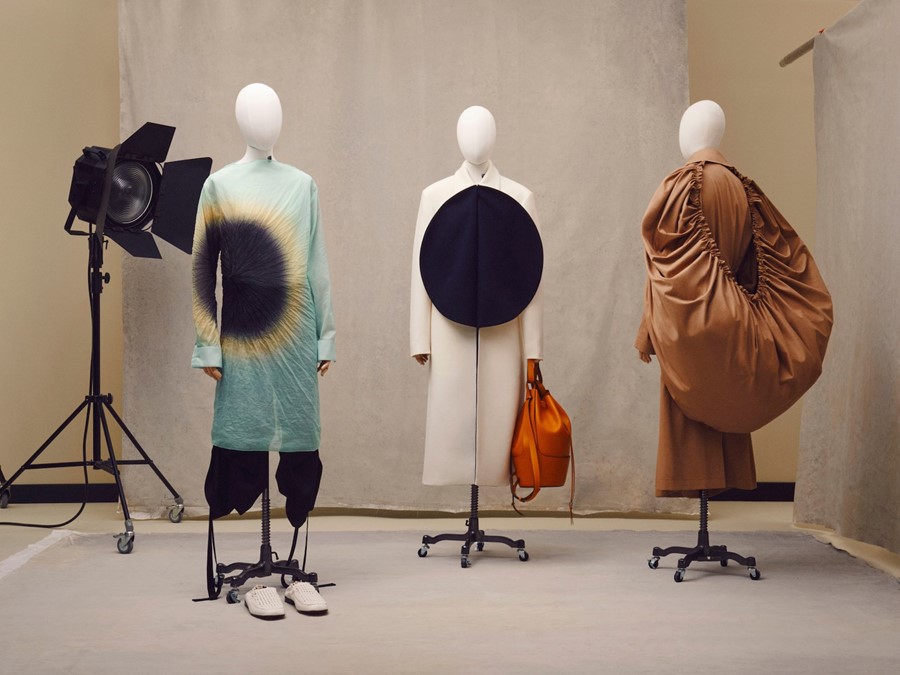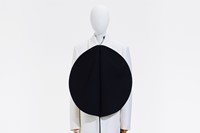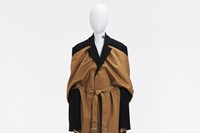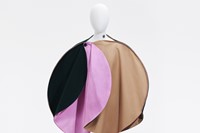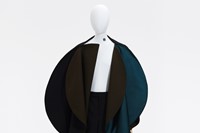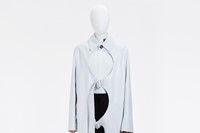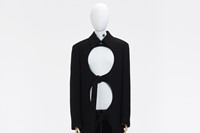Presented via a “show in a box” and accompanying 24-hour festival on Instagram, Loewe’s new menswear and pre-fall womenswear collections demonstrate Jonathan Anderson’s expansive view of what a fashion collection can be
Jonathan Anderson’s conception of Loewe has never been just about clothes – since the beginning of his tenure in 2013, he has sought to build a “cultural brand”, whereby the twice-yearly fashion show is just part of the story. In 2016, he began the annual Loewe Craft Prize; there have been exhibitions at Salone del Mobile design fair in Milan and Art Basel in Miami, collaborations with artists, or their estates – from Anthea Hamilton to Peter Hujar – and stores reminiscent of a collector’s apartment, dotted with esoteric artworks selected by Anderson himself. Loewe has even become a prolific art-book publisher under the designer: each season, a much-coveted – and limited-edition – ‘Publication’ is printed and distributed to those closest to the brand.
And, while these pursuits might not be particularly befitting to life in lockdown – the Craft Prize has been delayed until 2021, and an exhibition of Divine memorabilia due to open in the Madrid store moved online – Anderson’s unbounded view of what a fashion label can be has put him in good stead as the usual system grinds to a halt in the wake of the coronavirus pandemic. Last week, at eponymous label JW Anderson, he pioneered the idea of a “show in a box” – delivered to ‘attendees’ at their homes in lieu of a digital film or presentation – which comprised of show looks and fabric swatches, a mask by Spanish illustrator Pol Anglada, and delicate pressed flowers which hid beneath the pages. It was a precious memento: as shows move online, this was something you could reach out and touch, an object to keep and treasure.
This past weekend, he revived the format for his latest menswear, and women’s pre-fall, collections for Loewe. A far heftier parcel – American Vogue calculated its weight at ten pounds – its sturdy Loewe-branded outer casing was befitting for the comparative size of the house, which employs over 1,000 people across the world, from artisans and designers to shop staff. Designed by longtime collaborators Mathias Augustyniak and Michael Amzalag of design agency M/M Paris, the interior drew inspiration from Duchamp’s Museum in a Box, fastidiously cataloguing the conception of the collection: from a booklet of inspirations to colour and fabric swatches, silhouettes of the Loewe team’s faces, and even a pattern for one of the garments, divided like documents in a filing cabinet.
Other sections of the box attempted to replicate the fashion show itself: a fabric-covered book opened to reveal a pop-up version of an imagined show set, while the various show looks were printed on perforated paper, and could be folded into 3D forms. An accompanying seven-inch vinyl came with a portable cardboard record player – when you pushed the record around with your fingertips, the clattering sounds of the Loewe factory in Getafe, Madrid played out, voiced over by Dr James Fox. There was even a poster-sized invitation, featuring an image by Thue Nørgaard.

It gave the opportunity for the sort of immersion in a collection that even a fashion show might not allow: each element demanded to be touched and unfolded, or flicked through with your fingers. “The thinking behind the ‘show in a box’ came out of the situation we’re all in. I didn’t really want to go back into a show, or some sort of more digital process,” Anderson said of how he settled on the idea. “We have started to learn over the period of quietness and reflection to use our hands, to express ourselves, to make bread, to knit or do gardening.”
The idea of craft – of using one’s own hands to create – has long been a central tenet of Anderson’s Loewe, and the reveal of the collection was accompanied by a 24-hour art, craft and music festival on the house’s Instagram. There were conversations between Anderson and photographer Tyler Mitchell, who the designer has collaborated with at both JW Anderson and Loewe, house muse and actor Josh O’Connor, and a series of performances from emerging musical talents across the world, curated by Adam Bainbridge, aka KINDNESS. But perhaps most compelling were those which captured Anderson’s devotion with craft: whether a round-table discussion with a gathering of textile artists, or the short film which captured the painstaking leatherwork behind the house’s new Balloon Bag.
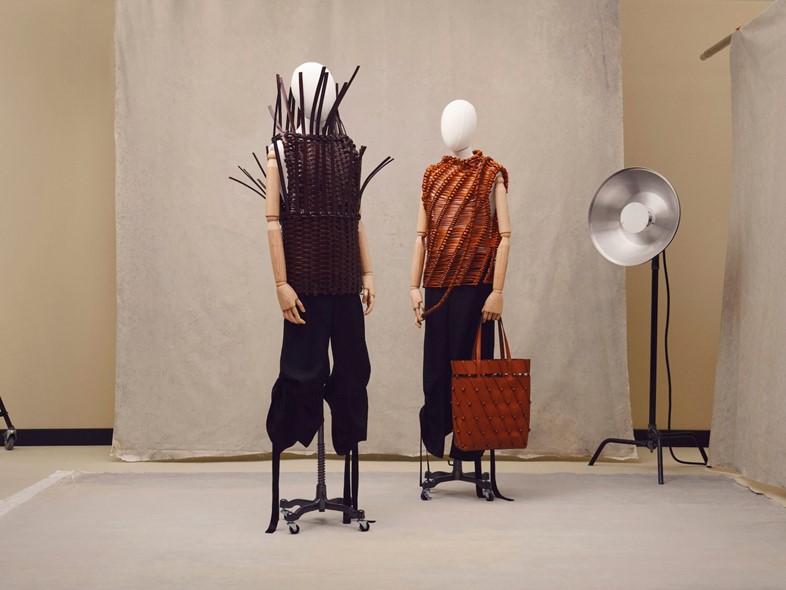
Another clip shown during the digital festival captured Idoia Cuesta, a Galician basket weaver, creating the playful ‘pineapple bag’ which appears as part of the new accessories for the season. She also collaborated on items of clothing within the collection, too: a pair of woven leather vests, the latter of which features fronds of leather rising high up over the face, are perhaps some of the most striking looks. Anderson said with these he hoped to “blow up and maximise craft”, speaking of the almost-therapeutic necessity to hone in on a singular technique and then work it out into items of clothing. “The approach for the menswear collection was taking one technique or one idea and making it a total look,” Anderson said. “Each time we were doing pieces they had to be quite peaceful in their approach, and they had to work sculpturally on a mannequin.”
The feeling of both softness and sculpture informed the rest of the men’s collection: taking the language of weaving, the accompanying release talked of working in “curves, swings and loops that skew the hard edge”. The circle became the collection’s defining motif, from swirling prints based on Japanese Shibori, to colourful circular tops, made to flap back and forth in movement, but also vast ballooning silhouettes, oval cut-outs, or hoops, installed into the sleeves of knitwear for a compelling new silhouette. A jacquard knit featuring a work by 20th-century painter Paul Cadmus – which the designer had seen in tapestry form – linked with stories he had heard about men returning from World War II taking up needlepoint as therapy. In troubled times, Anderson seemed to say, craft can be a balm.
“I think within each garment, from the basket tops, to shearling, to Shibori, these things are all creative outputs by artisans,” Anderson surmised. “Each piece is a narrative to a bigger story: the story of modern craft.”
